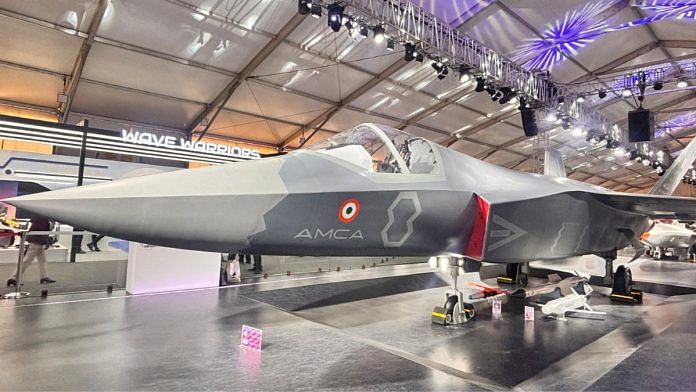New Delhi: India has taken a major step towards developing its indigenous fifth-generation fighter jet, the Advanced Medium Combat Aircraft (AMCA), by inviting Expression of Interest (EOI) for its prototype development.
This marks a historic shift in defence procurement and industrial participation policy.
The EOI issued by the Aeronautical Development Agency (ADA) aims to shortlist Indian Companies (owned and controlled by resident Indian citizens) for prototype development of AMCA.
The ADA says the applicant may be a single company, a joint venture or a consortium of companies, which are technically capable of developing and building the prototypes, supporting flight tests and certification of AMCA.
It added that the requirement is that those applying should be reputed Indian companies experienced in the Aerospace & Defence sector, with the capability to absorb the design of AMCA and have adequate experience in the field of development & engineering, manufacturing, equipping, integration, testing, quality management, customer support.
The shortlisted entity must possess the capability of setting up a manufacturing facility for series production.
The duration of the contract for development, prototyping, flight test and certification of AMCA shall not exceed eight years from the effective date of contract, the EOI issued by ADA said. The last date for submission is 16 August.
In a first-of-its-kind move, Defence Minister Rajnath Singh had, last month, approved the the execution model for the AMCA project which provides equal opportunities to both private and public sectors on a competitive basis. They can bid either independently or as joint ventures or as consortia. This means that no one entity will be considered as a natural choice and everyone will have to bid to win the contract.
This implies that HAL, which has been the only entity in India to manufacture fighter planes, will have to compete against private companies, like TATA, Adani, L&T and other interested players to bag the contract to build the prototype, as reported by ThePrint earlier.
This goes against the current practice, where HAL would have been the natural choice as the production agency, which would have then tied up with private players for manufacturing components and parts.
The five prototypes of AMCA are set to be rolled out by 2031, and the series production is slated to start by 2035. The first prototype is expected to come out by 2028. The IAF plans to have seven squadrons of the AMCA, starting 2035.
The development comes amid reports that China is expediting delivery of its fifth-generation fighter—J-35A—to Pakistan, which will widen the capability gap with the IAF.
While in terms of pure numbers the IAF has more fighters, Pakistan has a higher mix of 4.5-generation fighter jets.
China also unveiled what are claimed to be two sixth-generation fighter jets—Chengdu J-36 and Shenyang J-50—last December.
(Edited by Viny Mishra)
Also read: Stage set for Russian 5th-gen fighter Su-57 demo at Aero India 2025, F-35 to be on static display





The problem is not so much state-owned vs private companies…look at the cost analysis of the private companies in the Us…cost overruns are exorbitant. It is a question of “motivation” and accountability/negative consequences for failure to deliver quality on schedule and budget. This needs to be corrected, for state-owned or private companies…and its the top top level management that should be held to task for non-compliance.